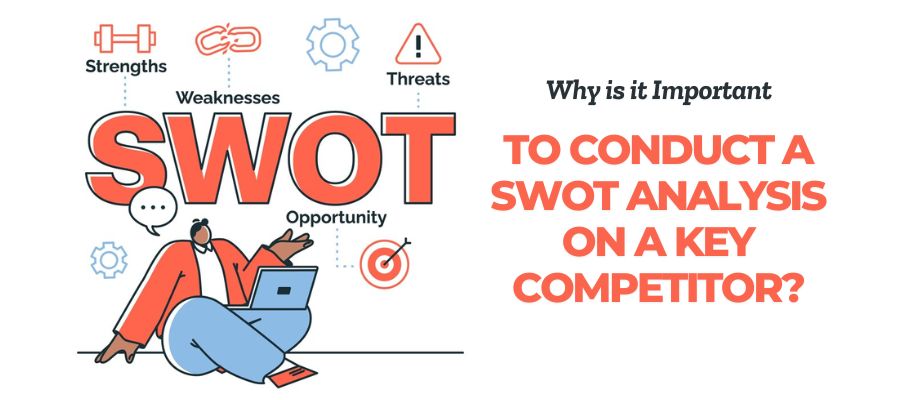SWOT analysis is a powerful strategic planning tool used to identify and evaluate the internal and external factors that affect a business’s success. The acronym “SWOT” stands for Strengths, Weaknesses, Opportunities, and Threats. By conducting a SWOT analysis, companies can gain a clear perspective on their internal strengths and weaknesses and the external opportunities and threats that impact their operations and objectives. This analysis helps businesses make informed decisions by highlighting areas for growth and improvement, enabling them to strategize effectively to enhance competitive advantage.
What to Do After SWOT Analysis
Completing a SWOT analysis is only the beginning. The next steps involve translating these insights into an actionable and effective strategy.
1. Review and Prioritize Findings
After gathering information in each quadrant, it’s essential to review and prioritize key points. By categorizing the insights identified from the SWOT analysis, you can focus on the areas with the most significant potential impact.
- Strengths and Weaknesses: Group internal strengths and weaknesses by their relevance to current business goals.
- Opportunities and Threats: Similarly, identify which external factors are opportunities for growth and which could present potential threats if left unaddressed.
2. Set Clear Goals and Objectives
Once priorities are established, turn them into specific, measurable goals. Set clear objectives that align with each strength, weakness, opportunity, and threat.
- Leveraging Strengths: If your business has a large customer base, an objective might be to increase customer loyalty through a new product or improved customer service.
- Addressing Weaknesses: For weaknesses, such as a limited marketing budget, set objectives to explore cost-effective marketing strategies or to improve brand visibility within budget constraints.
- Opportunities: Set goals that take advantage of external opportunities, like expanding into new markets or introducing innovative products.
- Mitigating Threats: Establish objectives to counteract potential threats, such as adjusting your supply chain to avoid disruptions.
3. Develop Strategic Actions and Action Plans
A well-defined action plan is essential to putting your SWOT insights into practice. Here’s a step-by-step guide to creating actionable plans:
- Map Out Strategies: Create a roadmap that addresses each SWOT quadrant. For example:
- Strength-Opportunity Strategy: Use strengths to seize opportunities. If your company has strong distribution, expand to new markets where similar services are scarce.
- Weakness-Threat Strategy: Minimize weaknesses to defend against threats. If facing a new competitor, improve internal processes to enhance competitive position.
- Assign Responsibilities: Identify team members best suited to handle each task and set deadlines to maintain accountability. For example, a marketing manager could take charge of developing actionable strategies for a new product launch.
- Align Actions with Overall Goals: Ensure each action plan is aligned with the company’s broader business strategy. Strategic planning should be cohesive and directed toward achieving your goals.
SWOT Analysis Examples
Here are some examples of companies that used SWOT insights to their advantage:
- Example 1: Starbucks: Starbucks identified its strengths in brand reputation and customer loyalty. The company set goals to increase mobile orders and introduce new products that align with consumer trends, leveraging these strengths to expand their customer base.
- Example 2: Nike: Nike conducted a SWOT analysis to identify areas for growth and improvement. It capitalized on its global brand recognition (strength) and identified opportunities for growth in the athleisure market. This resulted in targeted marketing campaigns that allowed Nike to successfully launch new products aligned with market demand.
These case studies illustrate how successful companies used SWOT analysis to achieve strategic objectives and drive growth.
Monitor and Adjust Strategies
The business environment is constantly evolving. Regularly monitor and evaluate your strategies to ensure they remain effective.
- Set Regular Check-Ins:
Schedule periodic reviews to assess progress toward each goal. For example, conducting quarterly reviews to determine if your actionable plan is on track. - Adjust as Needed:
Be prepared to adapt your strategy if certain goals are not being met or if external factors change. For instance, if there’s a sudden supply chain disruption, re-evaluate your strategies to avoid delays in production.
Conclusion
Conducting a SWOT analysis provides invaluable insights, but the true value lies in turning those insights into action. By following these steps—reviewing findings, setting objectives, creating an action plan, and continuously monitoring progress—you can maximize the benefits of a SWOT analysis. Using this approach will help businesses strategize, make informed business decisions, and achieve sustainable growth.
Also Read: When is the Best Time to Conduct a Swot Analysis?
FAQs
1. What is the purpose of conducting a SWOT analysis?
A SWOT analysis helps identify and understand the internal and external factors that affect your business. This analysis tool allows businesses to make data-driven decisions, improve competitive advantage, and strategically plan for future growth.
2. What should I do after completing a SWOT analysis?
After a SWOT analysis, prioritize findings, set clear goals, create actionable strategies, and assign tasks. It’s also important to monitor your progress and adjust as necessary to ensure you’re on track.
3. What should be the first step after completing a SWOT analysis?
The first step is to review and prioritize the strengths, weaknesses, opportunities, & threats identified. From there, set goals that align with each quadrant to effectively address key findings.
4. How can I allocate resources based on SWOT analysis results?
Resource allocation should align with your priorities. Invest in strengths, address weaknesses, and capitalize on opportunities. Allocate budget, time, and personnel based on which areas have the most potential impact.
5. How can I measure the success of my post-SWOT actions?
Success can be measured by setting measurable objectives and tracking key performance indicators (KPIs). Regularly review your strategic actions and make adjustments to stay aligned with your goals.





